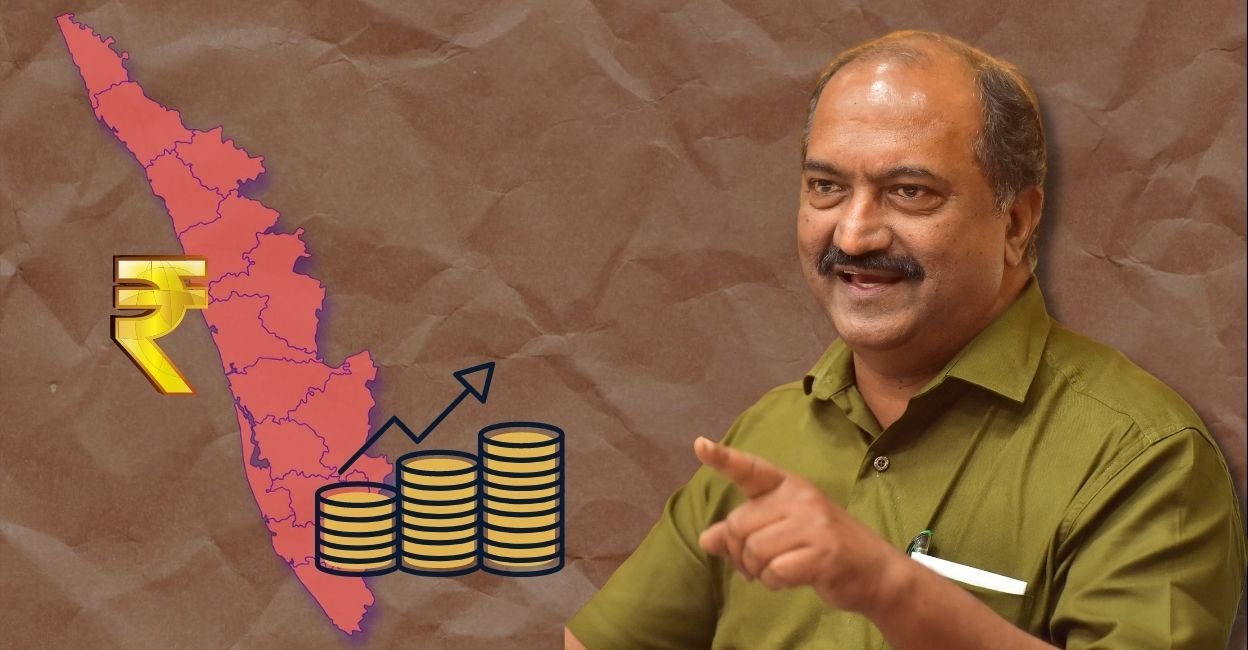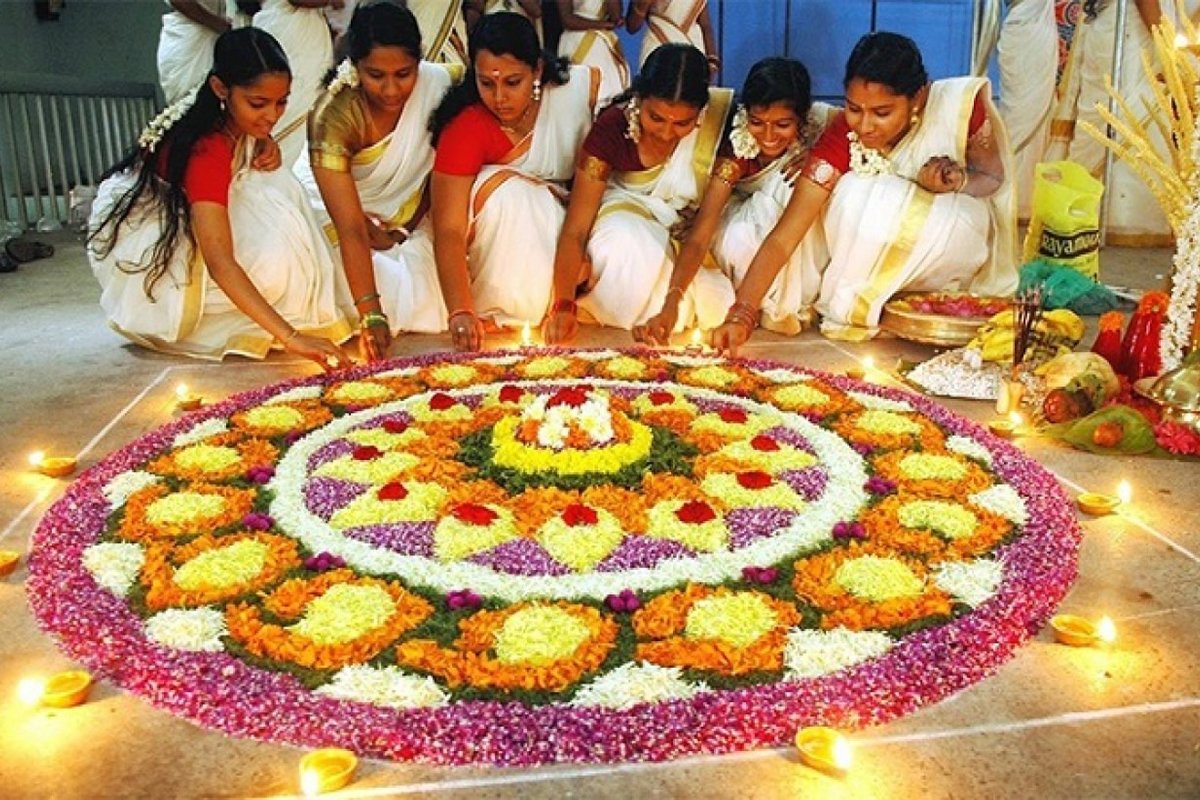Kerala’s Onam expenses at Rs 8,000 cr, state to borrow Rs 3,000 cr
1. Introduction: Overview of Kerala’s Onam Expenses and Borrowing Plan
Kerala, known for its vibrant culture and rich traditions, celebrates the annual festival of Onam with great enthusiasm and grandeur. However, this year’s Onam celebrations come with a hefty price tag. The state government has allocated a staggering amount of Rs 8,000 crore for the festivities, encompassing various events, welfare programs, and infrastructure development. To fund this immense expenditure, Kerala plans to borrow Rs 3,000 crore. This article provides a comprehensive analysis of Kerala’s Onam expenses and the rationale behind the state’s decision to borrow. It delves into the breakdown of the allocated funds, examines the economic impact of heavy borrowing, explores alternative funding options, and discusses the criticisms and concerns surrounding the state’s borrowing plan. Furthermore, it offers insights into the potential consequences and long-term effects of Kerala’s borrowing for Onam expenses.
1. Introduction: Overview of Kerala’s Onam Expenses and Borrowing Plan
1.1 Background of Onam Festival
Onam, the vibrant and joyous harvest festival, holds a significant place in the hearts of the people of Kerala. It is a time for feasting, cultural performances, and embracing the spirit of unity and togetherness. This grand celebration lasts for ten days and is eagerly awaited by the entire state.
1.2 Kerala’s Onam Expenditure Trend
Over the years, Kerala has witnessed a steady rise in the expenses incurred during the Onam festival. From elaborate decorations to hosting cultural events, the state has been committed to making Onam a memorable experience for its residents and visitors alike. The expenditure involved in organizing this grand festival has been increasing, reflecting the state’s dedication to upholding its traditions and values.
1.3 Current Borrowing Plan
To fund the extravagant celebrations and meet the growing expenditure demands, the Kerala government has decided to borrow Rs 3,000 crore. This borrowing plan is aimed at ensuring that Onam is celebrated with the same enthusiasm and fervor as in previous years. The state government is confident that this financial injection will help create an unforgettable Onam experience for everyone involved.
2. Breakdown of Onam Expenses: Analysis of Rs 8,000 crore Allocation
2.1 Allocation for Festive Events and Celebrations
Out of the total Rs 8,000 crore allocation, a significant portion will be dedicated to organizing the various festive events and celebrations during the ten-day long Onam festival. From arranging cultural programs to hosting traditional games, this allocation aims to create a vibrant and engaging atmosphere that captures the essence of Onam.
2.2 Budget for Welfare Programs and Subsidies
A portion of the funds will be allocated towards welfare programs and subsidies. This budget will be utilized to provide assistance to those in need, ensuring that everyone can participate in the festivities regardless of their financial situation. It reflects the state’s commitment to inclusivity and making Onam an occasion that brings joy to all.
2.3 Distribution of Funds for Infrastructure Development
Recognizing the importance of infrastructure for hosting successful events, a portion of the allocated funds will be dedicated to infrastructure development. This investment will help improve the facilities and venues used during the festival, ensuring a seamless and enjoyable experience for both locals and tourists alike.
3. Economic Impact: Implications of Heavy Borrowing on Kerala’s Financial Health
3.1 Increased Debt Burden on the State
While the decision to borrow funds for Onam festivities is made with good intentions, it cannot be ignored that it adds to the state’s existing debt burden. The increased borrowing will place additional financial strain on the government, which needs to be managed carefully to avoid potential long-term repercussions.
3.2 Potential Risks to Credit Ratings and Market Confidence
Heavy borrowing could potentially impact the state’s credit ratings and erode market confidence. It is essential for the government to demonstrate prudent financial management and clear repayment plans to maintain investor trust and ensure stability in the market.
3.3 Impact on Future Economic Growth and Development
While Onam celebrations are undoubtedly significant for cultural and social reasons, the financial implications need to be carefully considered. The diversion of funds towards festivities might impact investments in other crucial sectors like healthcare, education, and infrastructure. Balancing short-term celebrations with long-term economic growth and development remains a challenge for the state.
4. Justification for Borrowing: Reasons Behind the State’s Decision
4.1 Ensuring a Joyous and Inclusive Onam Celebration
The state government recognizes the importance of Onam as an occasion for unity and joy. By borrowing funds, it aims to ensure that the festival is celebrated with grandeur and inclusivity, allowing all sections of society to participate and enjoy the festivities.
4.2 Addressing the Needs of Various Sections of Society
By allocating resources towards welfare programs and subsidies, the state aims to address the needs of marginalized communities and individuals who may struggle with the financial burden of celebrating Onam. This approach reflects the government’s commitment to social welfare and ensuring that nobody is left behind in the festivities.
4.3 Supporting Local Businesses and Boosting the Economy
The infusion of funds into Onam celebrations is expected to provide a significant boost to local businesses. From artisans to caterers, numerous sectors benefit from the increased economic activity during the festival. By supporting these businesses and encouraging consumer spending, the state government hopes to stimulate economic growth and recovery.5. Criticisms and Concerns: Debate Surrounding Kerala’s Borrowing for Onam Expenses
5.1 Opposition from Political Parties and Social Groups
Unsurprisingly, the decision to borrow a whopping Rs 3,000 crore for Onam expenses has sparked criticism from various political parties and social groups. Some argue that this extravagant spending is unnecessary and irresponsible, especially when the state is already grappling with other pressing issues. They question the government’s priorities and suggest that the funds could be better utilized for more constructive purposes, like healthcare or infrastructure.
5.2 Concerns over Financial Responsibility and Accountability
A major concern surrounding Kerala’s borrowing for Onam expenses is the question of financial responsibility and accountability. Critics worry that such a significant loan could burden future generations with additional debt and hinder the state’s path to economic recovery. There are calls for greater transparency and scrutiny in the decision-making process to ensure that borrowed funds are used wisely and effectively.
5.3 Alternative Perspectives on Resource Allocation
In the midst of this debate, alternative perspectives on resource allocation have emerged. Some argue that instead of relying on loans, the state should focus on maximizing existing resources and finding innovative ways to fund festive celebrations. This viewpoint emphasizes the need for fiscal prudence and suggests exploring alternative funding options that do not burden the state’s finances.
6. Alternatives and Solutions: Exploring Other Funding Options for Festive Expenditures
6.1 Utilizing Existing Reserves and Revenue Streams
One possible solution to reduce the need for borrowing is to tap into existing reserves and revenue streams. Kerala boasts a diverse economy with multiple sources of income, including tourism, agriculture, and remittances. By prioritizing and redirecting funds from these sectors, the state can potentially allocate a portion towards Onam celebrations without resorting to additional debt.
6.2 Public-Private Partnerships for Financing Onam Celebrations
Another alternative is to explore public-private partnerships for financing Onam festivities. This approach involves collaborating with corporates, businesses, and local communities to share the financial burden. By engaging in strategic partnerships, the state can leverage private resources and expertise to fund the celebrations, ultimately alleviating some of the pressure on the government’s finances.
6.3 Innovative Fundraising Ideas and Community Contributions
Finally, Kerala could consider adopting innovative fundraising ideas and encouraging community contributions to finance Onam celebrations. This could involve organizing crowdfunding campaigns, hosting charity events, or establishing creative sponsorship opportunities. By involving the community and encouraging participation, the burden of financing the festivities can be shared, fostering a sense of collective responsibility and ownership.
7. Future Outlook: Potential Consequences and Long-term Effects of Borrowing
7.1 Evaluating Repayment Capacity and Debt Management Strategies
As Kerala borrows a significant amount for Onam expenses, it is crucial to evaluate the state’s repayment capacity and develop effective debt management strategies. Failure to do so could result in long-term financial strain and hamper the state’s ability to meet future obligations. It is imperative for the government to carefully assess the potential consequences and establish a sustainable plan for repayment.
7.2 Balancing Festive Expenditures with Essential Investments
Finding the right balance between festive expenditures and essential investments is essential for Kerala’s long-term financial health. While celebrating Onam is an integral part of the state’s cultural identity, it should not come at the expense of crucial sectors like education, healthcare, and infrastructure. Striking a balance ensures that the state progresses economically while honoring its traditions.
7.3 Learning from the Experience: Lessons for Future Fiscal Planning
Finally, Kerala’s borrowing for Onam expenses can serve as a valuable lesson for future fiscal planning. As the state reflects on this decision and its consequences, it has an opportunity to reassess its financial priorities and develop more sustainable funding mechanisms for festive celebrations and other expenditures. By learning from the experience, Kerala can adapt its financial strategies to optimize resource allocation and promote overall economic well-being.In conclusion, Kerala’s decision to allocate Rs 8,000 crore for Onam expenses and borrow Rs 3,000 crore has sparked a significant debate. While the state government justifies this expenditure as necessary for a joyous and inclusive celebration, concerns about the economic implications and long-term consequences of heavy borrowing remain. As Kerala moves forward, it is crucial to carefully assess repayment capacity, explore alternative funding options, and ensure financial responsibility and accountability. Balancing the cultural significance of Onam with prudent financial management will be essential for the state’s future economic growth and development.
FAQ
1. Why is Kerala borrowing money for Onam expenses?
The borrowing for Onam expenses in Kerala is driven by the aim to ensure a grand celebration of the festival while addressing the needs of various sections of society. The allocated funds are utilized for events, welfare programs, and infrastructure development, contributing to the overall well-being and economic growth of the state.
2. What are the potential risks of heavy borrowing on Kerala’s financial health?
Heavy borrowing can increase the state’s debt burden, potentially impacting its credit ratings and market confidence. It may also lead to higher interest payments and limit the availability of funds for other essential areas like infrastructure, healthcare, and education. Striking a balance between borrowing and financial sustainability is crucial for maintaining Kerala’s long-term economic stability.
3. Are there any alternatives to borrowing for funding Onam expenses?
Exploring alternative funding options can help mitigate the need for heavy borrowing. Kerala could consider utilizing existing reserves and revenue streams, encouraging public-private partnerships for financing celebrations, and engaging in innovative fundraising ideas. Such alternatives can distribute the financial burden and ensure a more sustainable approach to funding festive expenditures.
4. What are the potential long-term effects of Kerala’s borrowing for Onam expenses?
The long-term effects of borrowing for Onam expenses in Kerala may include an increased debt burden, potential challenges in repayment capacity, and a strain on future financial resources. Balancing the short-term joy of celebrations with prudent financial management will be crucial to safeguarding the state’s economic growth and ensuring a stable future for Kerala.




